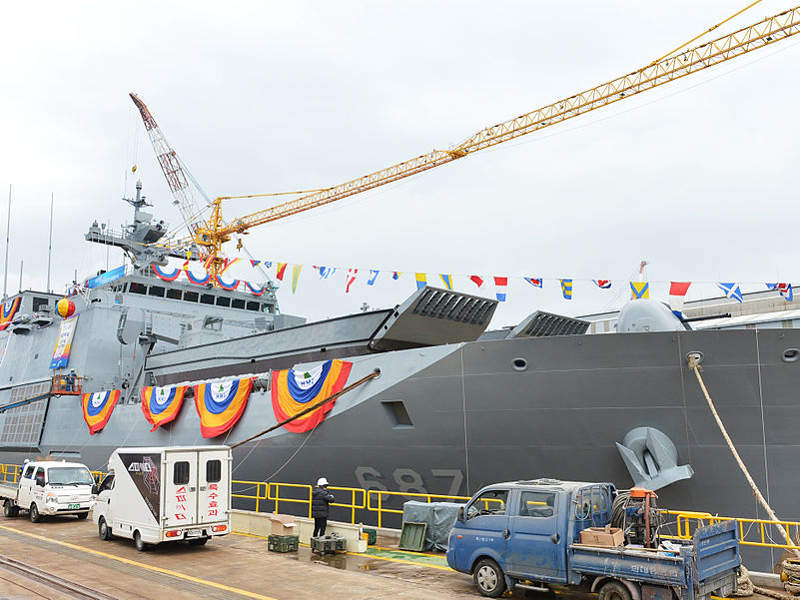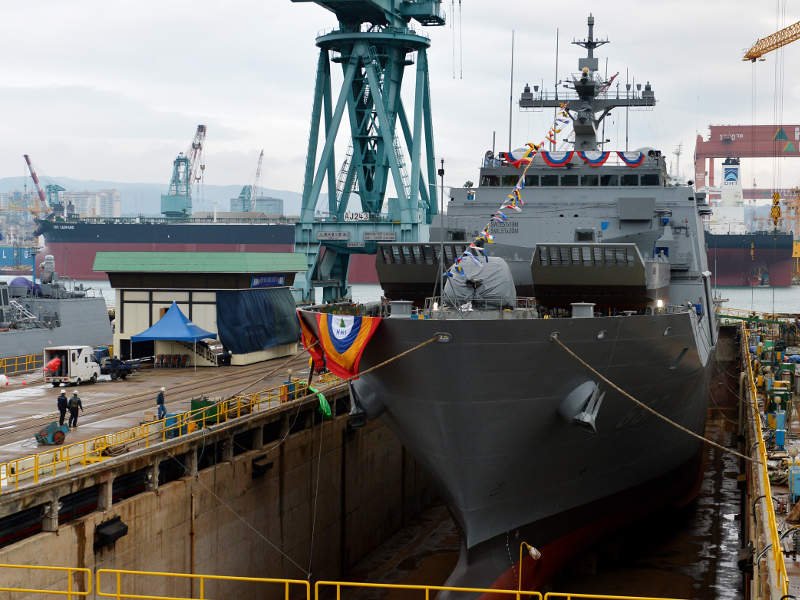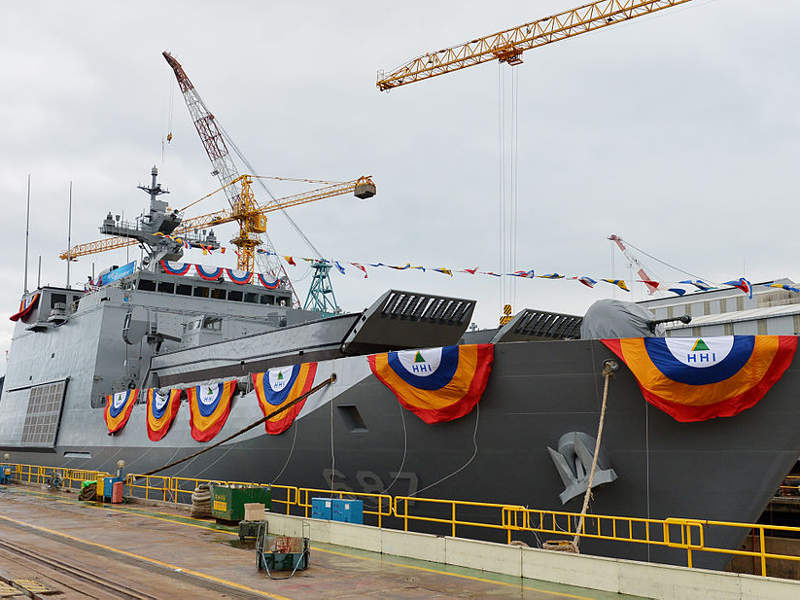Cheonwangbong-class landing ship tanks (LSTs) are next-generation landing craft built for the Republic of Korea Navy (ROKN). The LSTs succeed Go Jun Bong Class (LST-1) ships.
Under the second phase (LST-II), Cheonwangbong (686), the first LST in Cheonwangbong-class, was built by Hanjin Heavy Industries and Construction (HHIC). It was launched in September 2013 and commissioned in November 2014.
South Korea’s Defence Acquisition Program Administration (DAPA) placed a follow-on contract with Hyundai Heavy Industries (HHI) for the construction of the second LST, Cheonjabong (687), in December 2013. The vessel was launched in December 2015 and commissioned in August 2017.
The third LST in class, Yilchulbong (688), was launched by HHI in October 2016. It was scheduled to be delivered to the ROKN in late-2017.
HHI was also contracted to build a fourth LST-II class ship in November 2015. The vessel will be delivered to the ROKN by the end of 2018.
The vessels can support a range of missions, such as the transportation of troops, supplies and heavy equipment, as well as the landing of military forces to remote areas with no port infrastructure.
Design and dimensions of Cheonwangbong-class LST
Cheonwangbong-class LSTs are designed to cater for the requirements of modern amphibious and transport missions. The vessels integrate bullet-proof facilities, fire-proof bulkhead and stealth features for increased survivability during operations.
Cheonwangbong has an overall length of 127m, beam of 19.4m and draught of 5.4m. The full load displacement of the ship is 7,140t.
Cargo capacities
The LST is manned by a crew of 130 and can accommodate up to 300 fully equipped infantrymen, two tanks, eight amphibious assault vehicles (AAVs), a variety of vehicles, and field and Gatling guns,
The vessel also carries three landing craft mechanised (LCM) boats, of which two are positioned on the bow deck, near the wheelhouse. Each LCM can attain a maximum speed of 20k while carrying a tank or approximately 100 fully equipped troops.
Flight deck
The landing ship features a flight deck on the stern of the hull. The deck can handle the operations of up to two helicopters. The embarked helicopters ensure uninterrupted airborne and seaborne ship-to-coast transport capability.
Armament on board Cheonwangbong-class LST
The main gun fitted on the forward bow deck is a NOBONG 40mm twin naval gun equipped with a built-in diagnostic system. The twin gun carries 768 rounds of ready-loaded projectiles and offers a maximum rate of fire of 600 rounds a minute.
The 40mm gun protects the vessel from multiple threats, including aircraft, anti-ship missiles and hostile boats. The LST is also armed with a Korean Vertical Launcher System (KVLS) used for firing-guided missiles.
Radars and countermeasures
The LST is equipped with state-of-the-art electronic systems, such as an SPS-100K surface search radar, SPS-540K 3D surveillance radar and tactical air navigation system.
The countermeasures equipment on board the ship include a LIG Nex1 SLQ-200K Sonata electronic warfare suite and Rheinmetall multi-ammunition soft-kill system (MASS).
The MASS decoy system incorporates sensors for detecting radar and laser threats. It can be easily integrated into a command and control system or operated in standalone mode. The system offers a high level of protection against advanced sensor-guided missiles.
Cheonwangbong-class propulsion
The ship is powered by a combined diesel and diesel (CODAD) propulsion system integrating four MAN 12V28/33D STC diesel engines driving two propellers. Each engine provides a maximum power output of 5,460kW.
The vessel is also equipped with four 6L21/31 auxiliary engines, which have a rated power output of 1,200kW each. The propulsion system provides a cruising speed of 18k and maximum speed of 23k. The vessel can attain a maximum range of 8,000nmi.






